Y2K Designer Logos Are Back, But Not Quite How You Remember
The new way to prove your brand love.
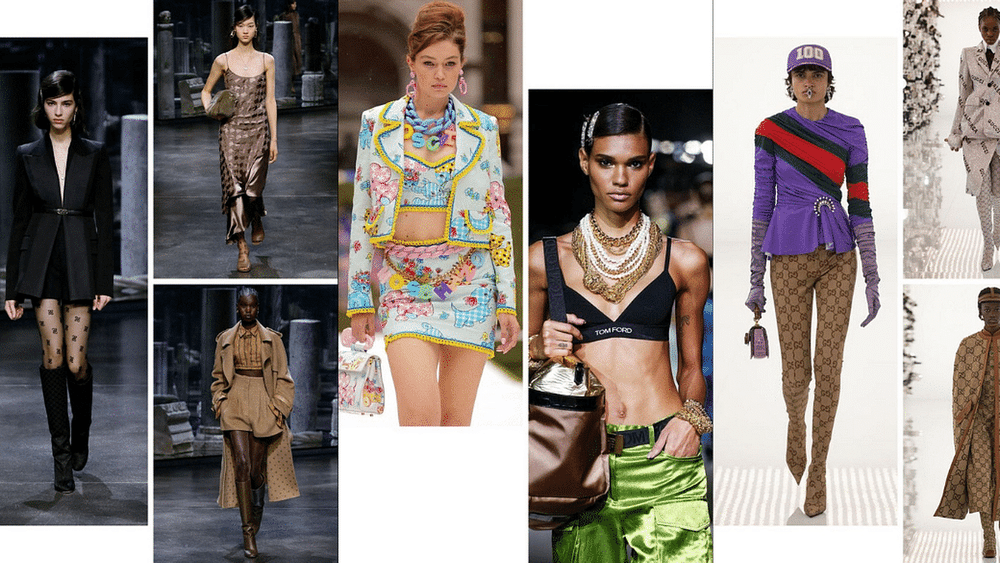
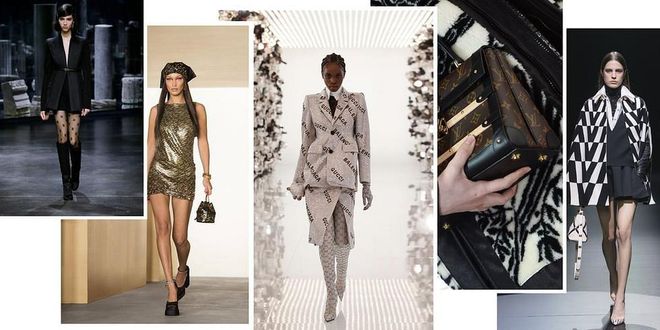
Photo: Getty
Y2K Designer Logos Are Back, But Not Quite How You Remember
Fendi, Louis Vuitton, Marine Serre, Loewe, Gucci, Versace, Balmain, Givenchy, Valentino: Each brand did logos its own way for fall 2021—and each one felt new and fresh. After all, the Gucci x Balenciaga collection, which may go down as the buzziest crossover of the year, was rife with what else? Smatterings of both of the brand’s logos. Even in the midst of Fashion Month for spring 2022, logos were on the rise. Who could forget Tom Ford’s unmistakeable logo bra tops, Versace x Fendi, or Moschino’s chunky pastel necklaces from recent runways?
Related article: Gucci Opens Vault, An Experimental Online Concept Store

Logos were on display on the Moschino and Tom Ford spring/summer 2022 runways.
Y2K Designer Logos Are Back, But Not Quite How You Remember
“Over the past few years, fashion lovers seem to have fallen into one of two camps: big monograms or more minimalist logos,” Morgane Le Caer, content lead at Lyst, explains. “However, thanks to recent collections and collaborations—most notably the Gucci and Balenciaga ‘hack,’ which quickly became one of the most-talked-about shows of the year—bold logos seem to have gained the edge on their more modest counterparts.” According to Lyst, over the past six months, interest in logo and monogram items has increased by 39 percent and 36 percent respectively, with the most popular brands standing as Gucci (+54 percent), Prada (+42 percent), Balenciaga (+25 percent), and Fendi (+18 percent).
Related article: Review Of Valentino Spring/Summer 2022 Collection
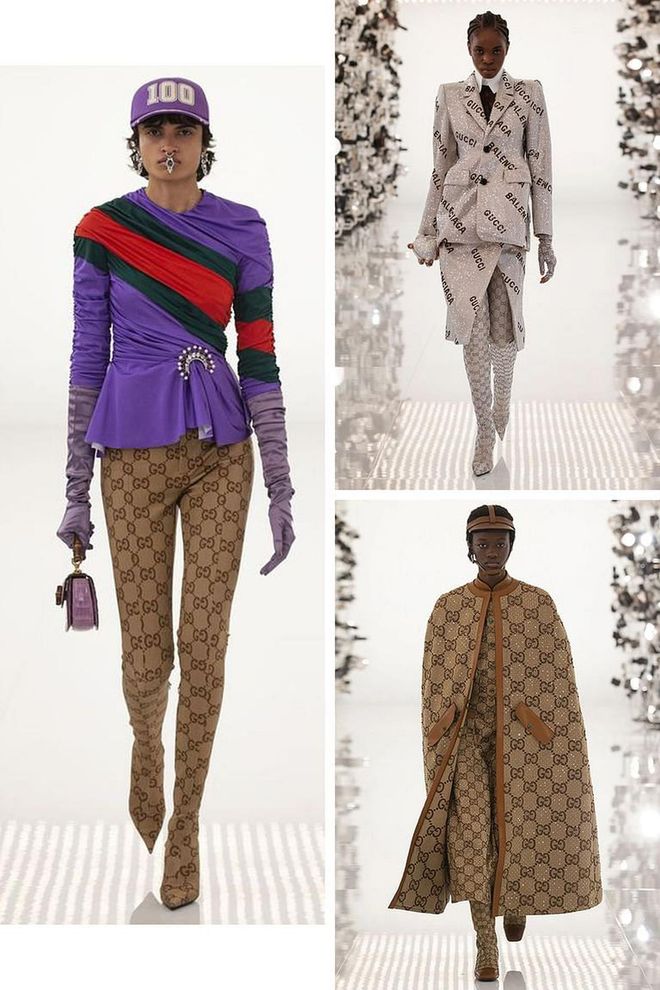
Photo: IMAXTREE
Y2K Designer Logos Are Back, But Not Quite How You Remember
So what’s behind the meteoric rise of the logo in 2021? We can credit a large part of it to a newfound obsession with Y2K fashion. Think: vintage Dior saddle bags, Louis Vuitton pochettes, and the return of Ed Hardy being cherished by fashion’s trendsetters (today that translates to famous faces including Bella Hadid and Addison Rae). The aesthetic can even be seen in the highest echelons of the fashion world. Take fall 2021’s runways as an example. There were Blumarine’s ultra-low-rise pants, Chanel’s tiny sequined dresses with short UGG-like boots, and Miu Miu’s silken studded slipdresses and knee-high fur boots that looked either Y2K raver or après-ski bunny, depending on how they were styled.
Related article: Review Of Loewe Spring Summer 2022 Collection

Bella Hadid in Ed Hardy, Tamu McPherson with a Dior saddle bag (ImageDirect). Photo: Getty
Y2K Designer Logos Are Back, But Not Quite How You Remember
From TikTok to Depop, a younger generation is now embracing both brands from the early-2000s graveyard and peak-2000s luxury culture, such as Galliano-era Dior monogram mini bags. “Throwback logos and styles gain popularity as the next generation of consumers reflect on items from the past,” fashion trend forecaster Chelsea Davignon, of Fashion Snoops, explains. “In the case of millennials, retro branding may resemble early style identities or sentimental first purchases, while Gen-Zers seek items that have never been a part of their wardrobes yet still evoke a comforting sense of familiarity.” There’s no question that fashion is bridging the gap between generations right now, whether that be through a Von Dutch cap from the early days of Paris Hilton or an Anna Sui logo baby tee from the late ’90s.
Related article: In Conversation With Christophe Lemaire On The Uniqlo U Fall/Winter 2021 Collection
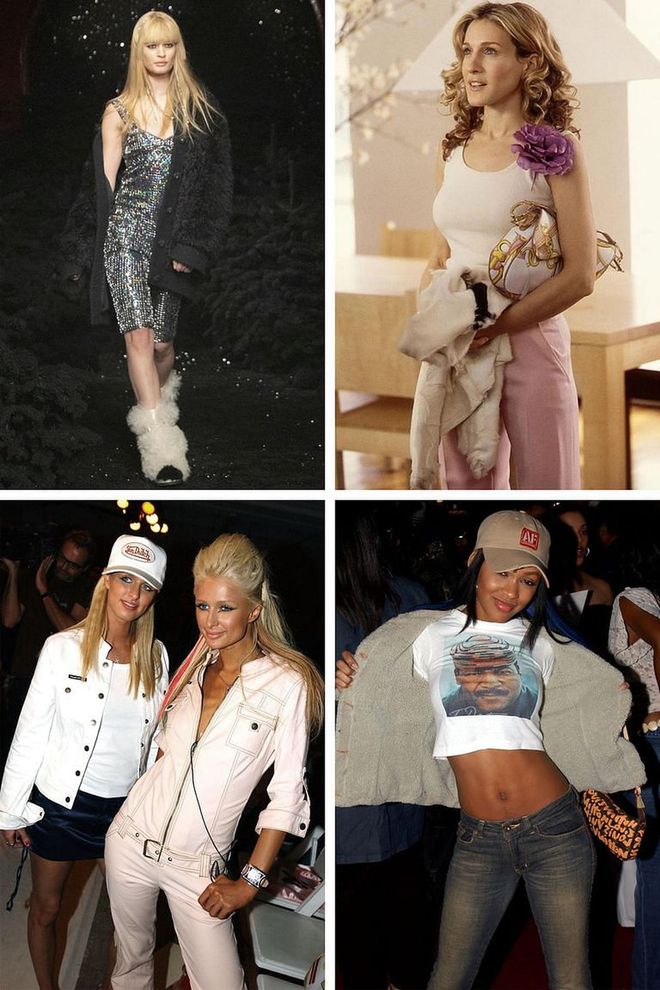
Top left: Chanel fall/winter 2021 runway; top right: Sarah Jessica Parker carrying the Dior Saddle Bag in Sex and the City; bottom left: Nicky Hilton in a Von Dutch trucker hat with Paris Hilton; bottom right: Meagan Good sporting a baby tee and LV pouchette. Photo: Getty
Y2K Designer Logos Are Back, But Not Quite How You Remember
“Y2K was an era of anything goes, a fashion free-for-all,” Anna Pompilio, senior strategist and trend forecaster at LPK, says. “More was more, and that was great. I’d say today, we’re experiencing much of the same attitude. We’ve exchanged unassuming, quiet luxury that has been at the helm for the last few years for overt extravagance and maximalism. Logos are a huge part of that.” According to Pompilio, there are two main reasons why the logo has become so big in 2021: the desire to dress up again in a post-pandemic world coupled with a longing for luxury, which has become so easily accessible through logos, as well as the intrinsic safety and classicism a logo offers—something that throughout history has symbolised status, craft, and quality.
As sweatpants and tees became all the more mainstream during the pandemic, showing up in logo designs revealed coded luxury or other messaging that felt like a special sort of dressing up. We’ve also been isolated, and sometimes, nothing brings people together more than a well-recognised logo, be it an early Dior monogram that Gen Z loves or an Ed Hardy tee that millennials are now cherishing and finding ironic.
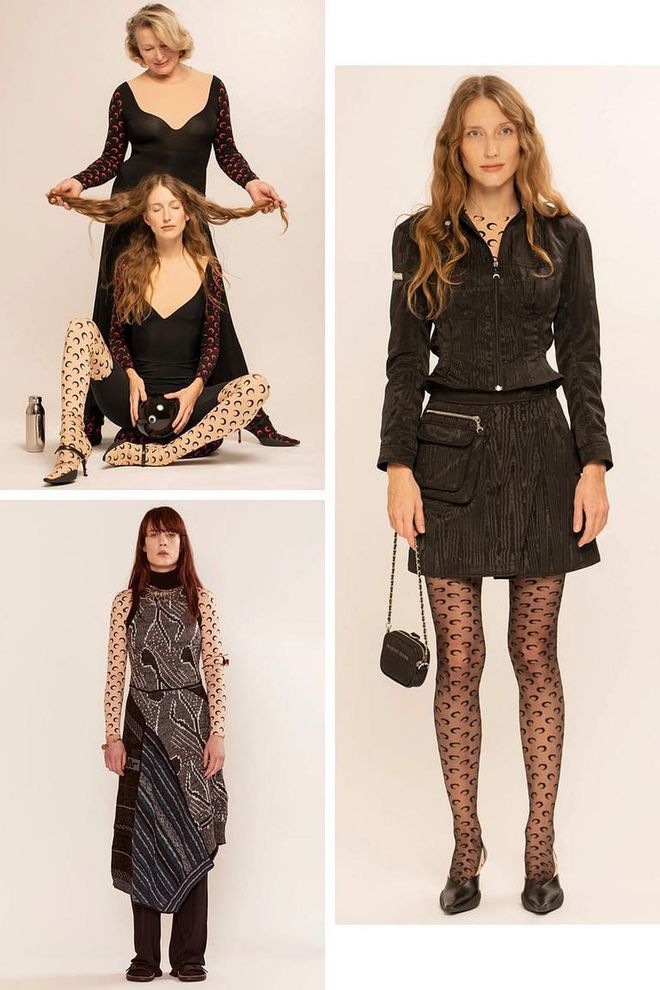
Marine Serre Fall/Winter 2021 collection. Photo: IMAXTREE
Y2K Designer Logos Are Back, But Not Quite How You Remember
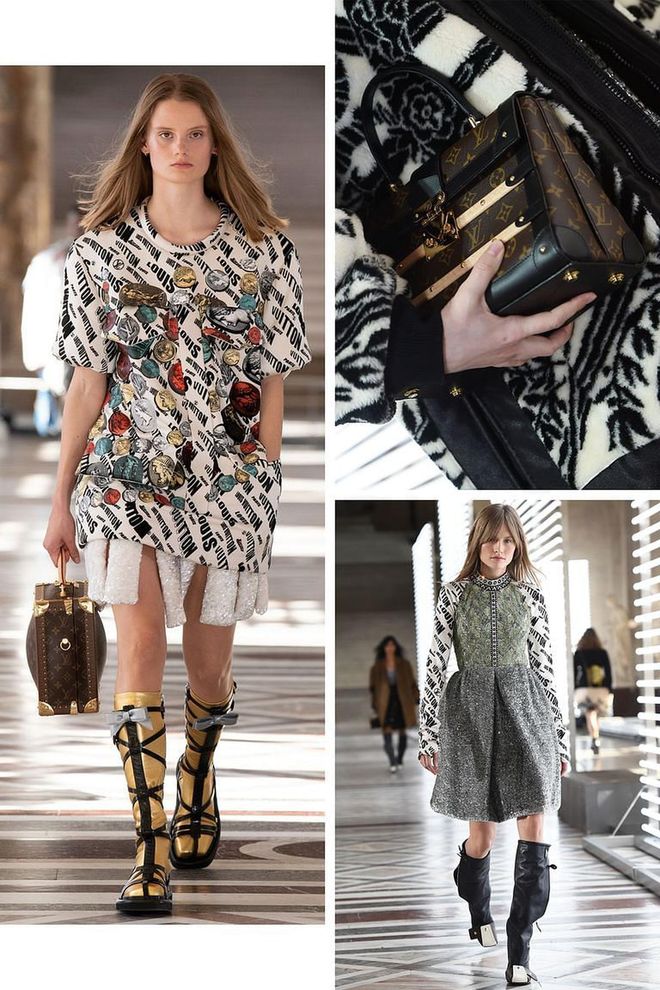
Louis Vuitton’s takes on the logo trend. Photo: IMAXTREE
Y2K Designer Logos Are Back, But Not Quite How You Remember
The industry, of course, sees trends come and go, but there was a period of time that didn’t really get caught up in logomania. So its resurgence now feels refreshingly new, especially in the context of how designers are using their logos. While household names are re-embracing classic codes of the past, emerging labels are relishing in the newfound power of a logo, which can wholly define the aesthetic of an entire brand. Just look at Telfar. The burgeoning brand has become distinctive for its bags flanked with the monogram modeled after its founder’s name, Telfar Clemens—which have risen to such ubiquity in certain parts of cool kid Brooklyn that it earned the moniker "Bed-Stuy Birkin."
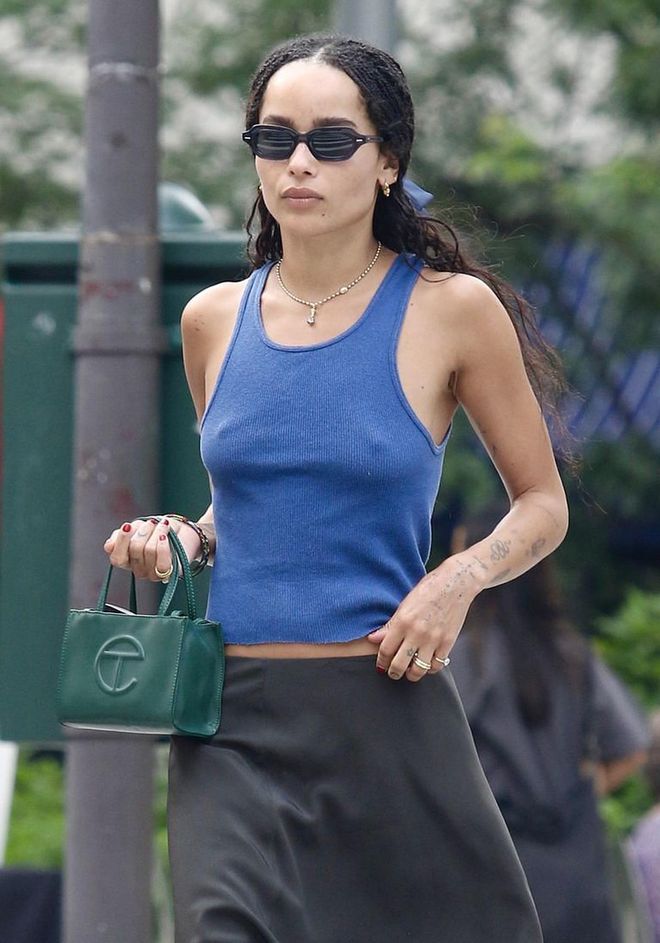
Photo: Getty
Y2K Designer Logos Are Back, But Not Quite How You Remember
Vegan handbag brand JW Pei, which has garnered high-profile fans ranging from Gigi Hadid to Megan Fox, is also making its logo a powerful statement. For fall, the brand is launching a new collection of mini bags incorporating the brand’s logo, a stylized version of the Chinese character, 非 (Fei), which is part of the founder’s family name, 裴 (Pei). Translations of the character, 非, include “not conforming to,” as well as “extraordinary.”
“There is so much product in today’s saturated market, much of which looks more and more similar every day,” JW Pei founder Stephanie Li explains. “We wanted to tap into our own version of ‘logomania’ but in a cool and different way than how we’ve seen it done in fashion thus far. We are transitioning our logo from a wordmark to a symbol derived from a Chinese character to make it more recognisable and honour our cultural heritage.”
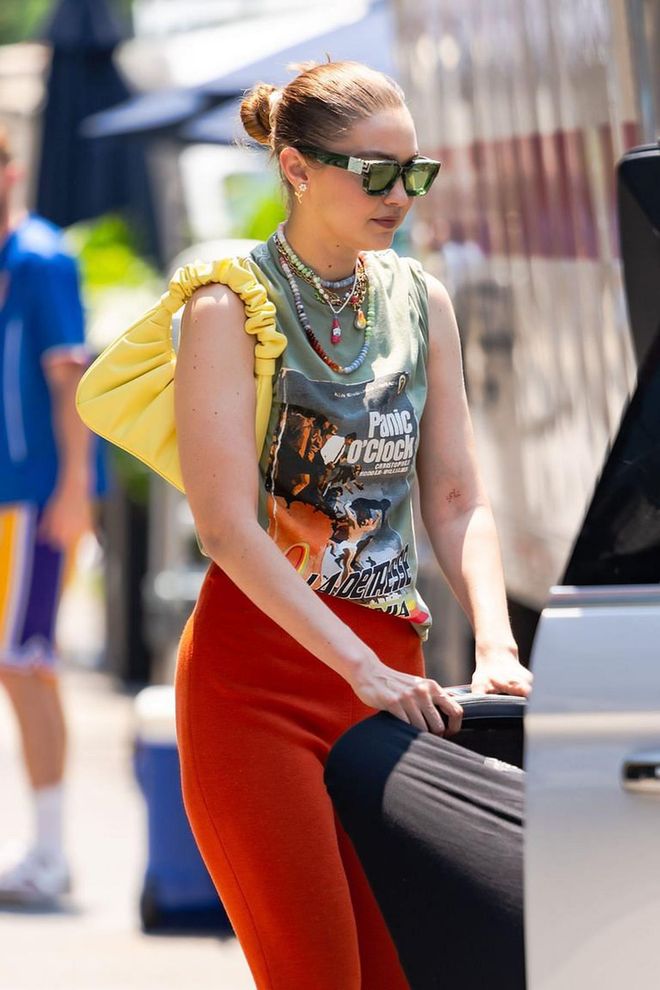
Gigi Hadid carries a JW Pei handbag while out in New York City. Photo: Getty
Y2K Designer Logos Are Back, But Not Quite How You Remember
Nomasei is another new brand that is reinventing the use of the logo. Founded by Paule Tenaillon and Marine Braquet, veterans of Dior, Chloé, and Louis Vuitton, the sustainable shoe brand finds creative use for its signature hand-symbol logo: You can find it on their footwear’s zipper pullers, medal emblems, and even soles.
“Our hand symbol reflects our philosophy; it is a hand because of our name, Nomasei, which is a play on ‘six hands’ in Italian—mano for ‘hand’ and sei for ‘six,’” Braquet explains. “These six hands are ours, and the other two hands refer to each person who participates in the process to make Nomasei a reality. From an intern to the final client, passing by each craftsman and worker and any collaborators who are involved in the process. The idea is to value all these people involved, because it is easy to dream alone, but it takes a village to make it happen.”

Versace Fall/Winter 2021 runway. Photo: IMAXTREE
Y2K Designer Logos Are Back, But Not Quite How You Remember
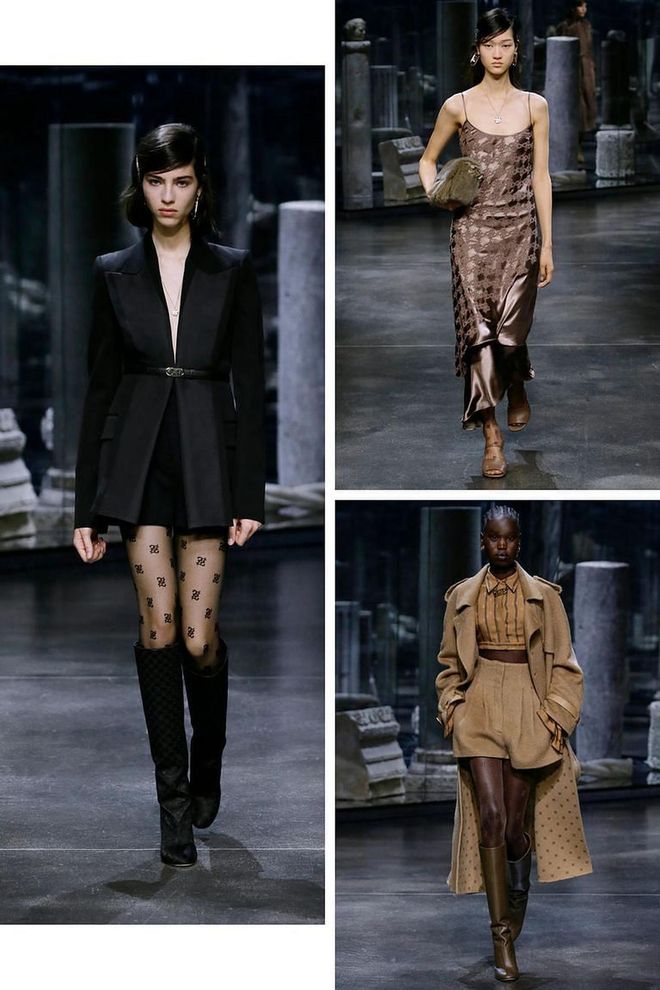
Fendi Fall/Winter 2021 collection. Photo: IMAXTREE
Y2K Designer Logos Are Back, But Not Quite How You Remember
As the world continues to rethink antiquated status quos, the logo is doing the same. No longer a symbol of just luxury, the 2021 logo is more about identity—it’s a message, a camaraderie, a movement. “The influx of support for small businesses during the pandemic may play a part in the rise of proudly presenting logos,” Davignon says. “As we continue to funnel our support into young talents and diverse pools of fashion’s next up, wearing our favorite brands on our sleeves acts as a way to show who we’re backing.”
So consider the logo the strongest fashion message of the future, whether it transcends generations through Y2K style or presents the narrative of an up-and-coming brand.
This article originally appeared on Harper’s BAZAAR US.